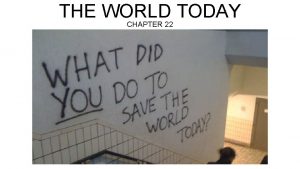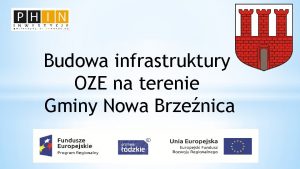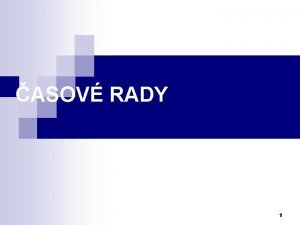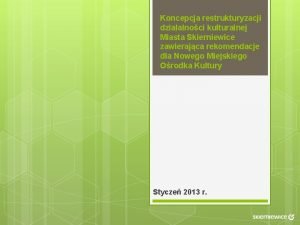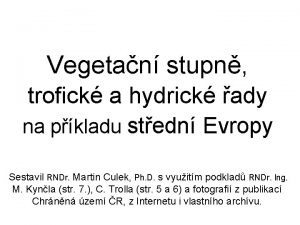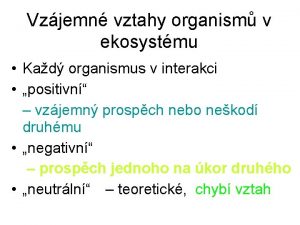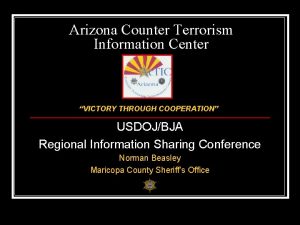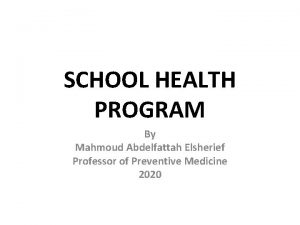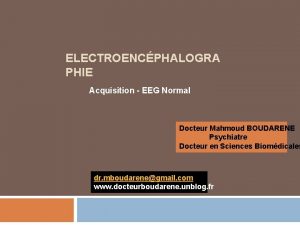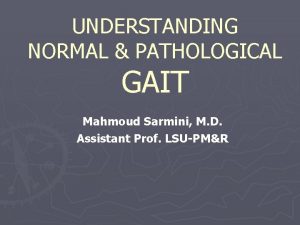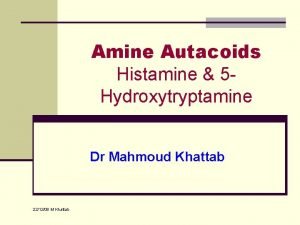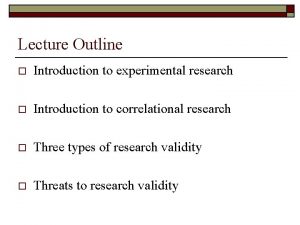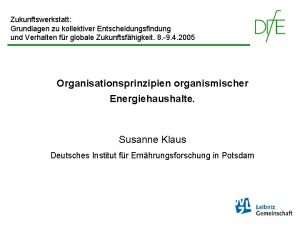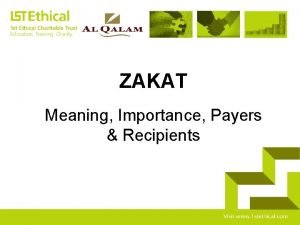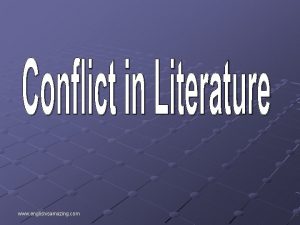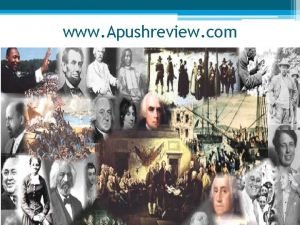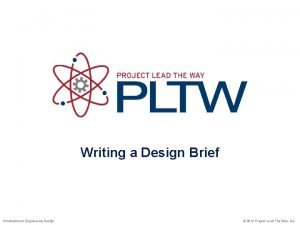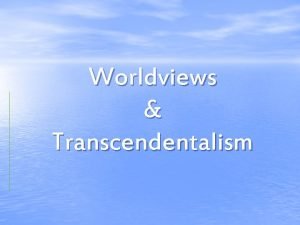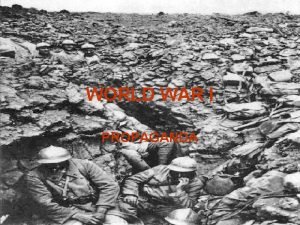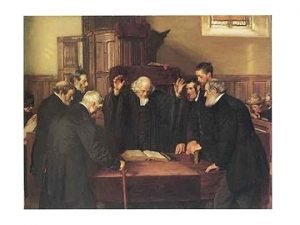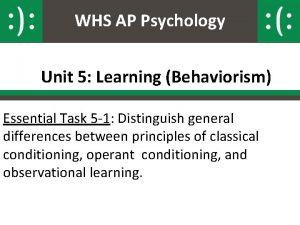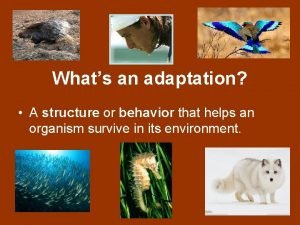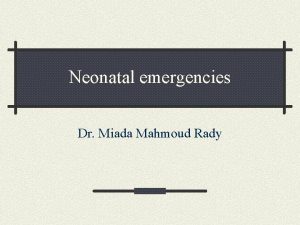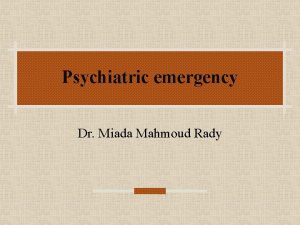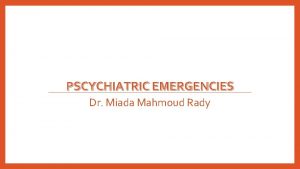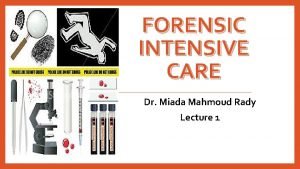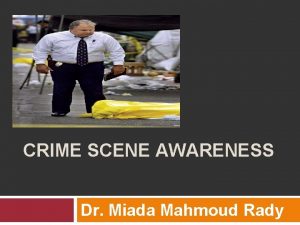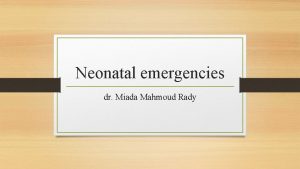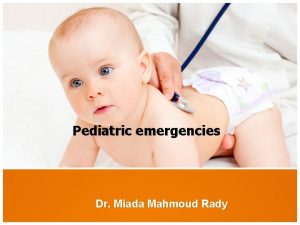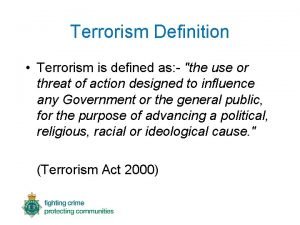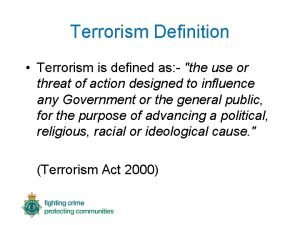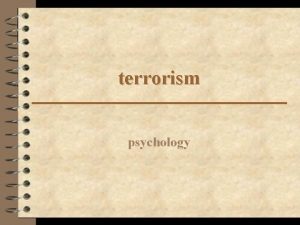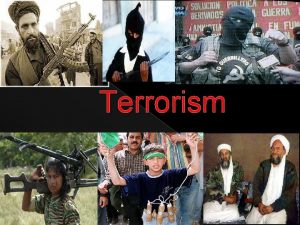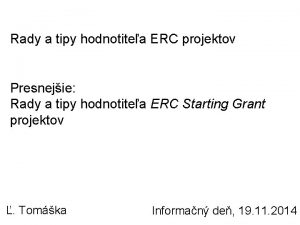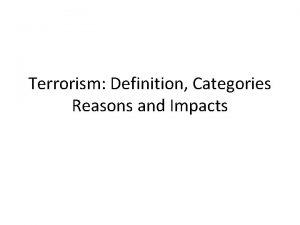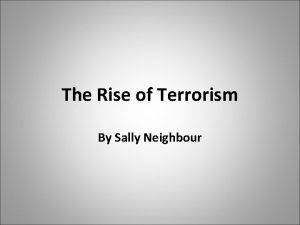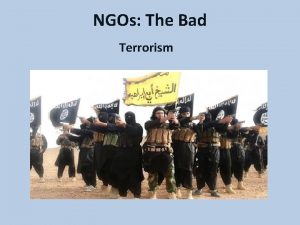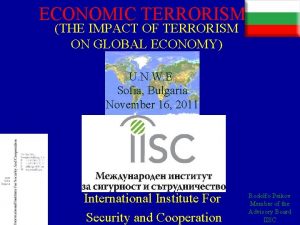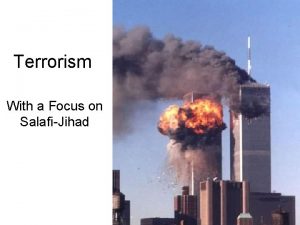Terrorism Dr Miada Mahmoud Rady Terrorism Definition A












































































- Slides: 76

Terrorism Dr. Miada Mahmoud Rady

Terrorism Definition : A violent act dangerous to human life to intimidate or force a government, the civilian population, or any segment, in advantage of political or social objectives.

Classification 1. International terrorism : Acts of terror committed by foreign agents. 2. Domestic terrorism : terrorists are citizens of the same country attacked.

Recognizing a Terrorist Event (Indicators) Acts of terror are usually secret there are indicator which include locations.

Targeted locations of terrorist attacks High-value targets for terrorists include: 1. Military bases and centers 2. Public transportation 3. Chemical plants or transportation 4. Government buildings and hospitals 5. Public gathering places

EMT Response to Terrorism On every call, you must make the following observations: 1. Type of location 2. Type of call 3. Number of patients 4. Victims’ statements 5. Preincident indicators

Response Actions If you suspect an attack: 1. Ensure scene safety and personal safety. 2. Notify dispatch and/or supervisor. 3. Request additional specialized resources. 4. Establish command. 5. Initiate multiple-casualty incident procedures.

Scene Safety 1. Do not enter the scene if there is any doubt that it is not safe 2. Best location for staging is upwind and uphill 3. Wait for assistance from trained personnel. 4. Wait for law enforcement personnel.

Responder Safety Best form of protection is preventing contact with the agent. The greatest threat in a WMD attack: 1. Contamination 2. Cross-contamination

Notification procedure and resource requests 1. As soon as you suspect a terrorist or WMD event, notify the dispatcher. 2. Establish a safe staging area. 3. Request Haz. Mat teams as early as possible.

Command Is first arriving paramedic Tasks of first arriving paramedic( incident commander) : 1. Report to incident command post. 2. Establish a medical branch. 3. Determine scope of incident. 4. Gather and disseminate information to dispatch.

Command 5. Assign a supervisor for the following areas: a. Decontamination b. Treatment c. Transportation d. Staging e. Rehabilitation 6. Report EMS activities to operations chief.

Weapons of Mass Destruction Definition : Any agent designed to bring about: 1. Mass death 2. Multiple casualties 3. Massive damage to property and infrastructure

Kinds of Weapons of Mass Destruction CBRNE is mnemonics for the kinds of WMDs: 1. Chemical 2. Biologic 3. Radiologic 4. Nuclear 5. Explosive

Explosives/inflammable Weapons Explosives are most common weapon used by terrorists.

Ammonium Nitrate or “Fertilizer” Bombs 1. Commonly used as an industrial-grade fertilizer 2. Requires special license for purchase 3. Can be mixed to create an extremely explosive compound

Chemical Agents Definition : Man-made substances that can have devastating effects on living organisms Produced in multiple forms: I. Liquid II. Powder III. Vapor

Chemical Agents Chemical weapon classifications depends on : 1. Properties or characteristics of an agent 2. Persistency and volatility 3. Route of exposure ( Vapor hazard , Contact hazard )

chemical agents Chemical agents are categorized into : 1. Vesicants (blister agents). 2. Respiratory agents (choking agents). 3. Nerve agents. 4. Metabolic agents (cyanides). 5. Irritating agents

Vesicants (blister agents) Definition : they are substances that cause burnlike blisters to form on the victim’s skin and in the respiratory tract. Primary route of exposure of vesicants is skin. If the substances are left long enough , it can produce vapor that will cause respiratory tract irritation.

Vesicants Examples of vesicants : 1. Mustard (H) 2. Lewisite (L) 3. Phosgene oxime (CX)

Signs of vesicant exposure on the skin 1. Immediate, intense skin pain Remember normal burn feeling and stages 2. Skin irritation, burning and reddening 3. Formation of large blisters 4. Gray discoloration of skin 5. Swollen and closed or irritated eyes 6. Permanent eye injury (including blindness).

Management 1. Rapid removal of the patient by specially trained personnel. 2. Aggressive decontamination by specially trained personnel wearing PPE. 3. Address ABCS. 4. Antidote : there is no known antidote for mustard and phosgene oxime , British antilewisite is used as antidote for lewisite.

Pulmonary Agents Gases that cause immediate harm to persons exposed to them Primary route is through the respiratory tract. Produce respiratory-related symptoms: 1. Dyspnea 2. Tachypnea 3. Pulmonary edema

Examples of pulmonary agents: 1. Chlorine. 2. Phosgene.

Chlorine (CL) First chemical agent ever used in warfare Clinical presentation : 1. First upper airway irritation and a choking sensation 2. Shortness of breath 3. Chest tightness 4. Hoarseness and stridor 5. Gasping and coughing

How to identify the presence of chlorine in the scene? 1. Characteristic smell of chlorine bleach 2. Green haze it produces in the atmosphere

Phosgene Product of combustion. Clinical presentation : Ø Very potent with a delayed onset of symptoms , mild exposure causes : 1. Nausea 2. Chest tightness and 3. Severe cough 4. Dyspnea on exertion

Pulmonary agent treatment 1. Remove the patient from the contaminated atmosphere. 2. Manage the ABCs aggressively. 3. Pay attention to oxygenation, ventilation, and suctioning. 4. Do not allow the patient to be active. 5. There are no antidotes.

Nerve agents Definitions : WMDs designed to kill large number of peoples with small quantities , they belong to Organophosphorus class. Mechanism of action: they block cholinesterase enzymes accumulation of acetylcholine at nerve ending overstimulation of body organs.



Types : four major types , which vary in their onset of action and lethal dose: 1. Sarin (GB) 2. Soman (GD) 3. Tabun (GA) 4. V agent (VX)

Nerve Agents

Clinical presentation Nerve gases is one of deadliest chemicals known. Can cause cardiac arrest within seconds to minutes of exposure. Clinical presentation of nerve gas toxicity is known by two mnemonics military and medical. ( SLUDGEM , DUMBLES).

Clinical effects of nerve agent mnemonics

Management 1. Decontamination. 2. Address ABCs. 3. Seizing patient will need nerve gas antidote kit. 4. Duo. Dote Antidote Kit contains a single injection of atropine and 2 -PAM chloride.


Metabolic agents (cyanides) Include cyanide agent and cyanogen chloride. Widely used in industry. Colorless gases with almond odor. Mechanism of action : impair the body ability to utilize oxygen.

Clinical presentation Low dose symptoms High dose symptoms 1. Dizziness 1. Shortness of breath 2. Light-headedness 2. Tachycardia 3. Headache 3. Seizures 4. Vomiting 4. Cardiac arrest

Management of cyanide toxicity 1. Decontamination : Patient should be removed from the contaminated area and all their clothes should be removed to prevent offgasing by trained personnel wearing PPE. 2. Address ABCs and insert an I. V access : in case of sever exposure patient will require aggressive oxygenation and ventilation.

Biologic terrorism. Biologic agents are organisms that cause disease. The primary types are: 1. Viruses 2. Bacteria 3. Toxins

Why Biologic Agents are considered extremely dangerous 1. Almost completely undetectable. 2. Diseases caused is similar to other minor illnesses. 3. May be spread in various ways : a. Dissemination is the means by which a terrorist will spread the agent. b. A disease vector is an animal that spreads disease to another animal.

Viruses Special characters : 1. require a living host to multiply and survive. 2. Invades healthy cells and replicates itself to spread through the host 3. Moves from host to host by direct methods or through vectors

Examples of viruses used in biological warfare: 1. Small pox. 2. Viral hemorrhagic fever e. g. Ebola and yellow fever.

Small box Extremely infectious. The most contagious phase is when blisters begin to form. Clinical presentation : A. Non – specific symptoms : high grade fever , headache and bony aches. B. Followed by blisters appearance

Small pox blisters

Management 1. You must wear examination gloves, a HEPAfiltered respirator, and eye protection. 2. Observe the size, shape, and location of the lesions. 3. Vaccine is offered only to first responders due to its medical complication.

Viral hemorrhagic fever (VHF) Definition : group of disordered that Causes blood to seep out from the tissues and blood vessels. Examples: 1. Ebola 2. Rift Valley 3. Yellow fever viruses

Clinical presentation of viral hemorrhagic fever A. First : flu – like symptoms. B. Followed by massive internal and external hemorrhage from every organ , tissue and body orifice. ( hall mark )

Management 1. Standard precautions must be strictly followed , this is only available method of protection. 2. There is no working vaccine for VHF. 3. Treatment is mainly supportive 4. Manage ABCS and treat shock and hypotension if present

VHF

Bacteria A. Does not require a host to multiply and live B. Larger and more complex than viruses C. Can be fought with antibiotics D. Most infections begin with flulike symptoms.

Two types of bacteria are most commonly used : 1. Anthrax. 2. Plague.

Anthrax § Definition : deadly bacterium that lies dormant in a spore which are released when exposed to optimal temperature and moisture § Routes of entry : 1. Inhalation 2. Cutaneous 3. Gastrointestinal

Plague Natural vectors of plague are rodents and fleas. Two types of plague : A. Bubonic. B. Pneumonic

Types Pneumonic 1. Infects lymphatic system 2. Can lead to sepsis 3. Not contagious Bubonic 1. Lung infection 2. Contagious 3. Higher death rate

Clinical presentation It starts with flu – like symptoms : headache , fever and bone aches. Symptoms of pneumonia : cough , shortness of breath. Painful enlargement of lymph nodes.

Management of bacterial biologic agents A. Follow standard precautions. B. Address ABCS C. Patient with respiratory affection may require assisted ventilation. D. Rapid transport to specialized facility.

plague

Neurotoxins Most deadly substances known to humans. Produced from: 1. Plants 2. Marine animals 3. Molds 4. Bacteria

Route of entry: 1. Ingestion 2. Inhalation 3. Injection

Botulinum toxin Most potent neurotoxin produced from bacteria Affects the nervous system’s ability to function : 1. Leading to muscle paralysis. 2. Patient will go into respiratory arrest ( cause of death ).

Ricin Derived from mash left from the castor bean. Quite stable and extremely toxic Causes : A. Pulmonary edema B. Respiratory failure C. Death and circulatory

Clinical presentation A. Ingestion causes rapid onset of : 1. Nausea 2. Vomiting 3. Abdominal cramps 4. Severe diarrhea

Clinical presentation B. Inhalation signs and symptoms: 1. Irritation of eyes, nose, and throat. 2. Profuse sweating. 3. Cyanosis.

Management Treatment is supportive: 1. Intubation 2. Ventilation 3. Positive end-expiratory pressure 4. Treatment of pulmonary edema as appropriate

Radiation Definition : Energy emitted in the form of rays or particles Found in radioactive material , Radioactive material is unstable.


Radiation Energy emitted from a strong radiologic source and it has four categories. 1. Alpha 2. Beta 3. Gamma (x-rays) 4. Neutron radiation

Effects of radiation on the Body Effects vary depending on amount and route of entry Three levels of exposure: 1. Radioactive exposure 2. External contamination 3. Internal contamination

Clinical presentation Radiation can enter through all routes of entry as well as through irradiation Symptoms of acute radiation sickness divided 1. Low exposure 2. Vomiting 3. Diarrhea

Acute radiation sickness



 Terrorism definition
Terrorism definition Nato definition terrorism
Nato definition terrorism Pinokio czas i miejsce akcji
Pinokio czas i miejsce akcji Rada pedagogiczna kompetencje
Rada pedagogiczna kompetencje Sesja rady gminy nowa brzeźnica
Sesja rady gminy nowa brzeźnica časové rady
časové rady Sesja rady miasta skierniewice
Sesja rady miasta skierniewice Rady
Rady Trofické řady
Trofické řady Dobre rady dla rodziców przedszkolaka
Dobre rady dla rodziców przedszkolaka Trofické řady
Trofické řady Sayyidina umar
Sayyidina umar Terrorism
Terrorism Terrorism
Terrorism Arizona counter terrorism information center
Arizona counter terrorism information center Liberals vs conservatives apush
Liberals vs conservatives apush Mahmoud abdelfattah age
Mahmoud abdelfattah age Passport mahmoud darwish analysis
Passport mahmoud darwish analysis Dr mahmoud salman
Dr mahmoud salman Mahmoud arafa
Mahmoud arafa Boudarene mahmoud
Boudarene mahmoud Mahmoud sarmini md
Mahmoud sarmini md Dr mahmoud khattab
Dr mahmoud khattab Mahmoud khattab md
Mahmoud khattab md Hana mahmoud
Hana mahmoud Sample definition essay
Sample definition essay Operational definition
Operational definition Soziale wirklichkeit definition
Soziale wirklichkeit definition Energiereserven
Energiereserven Zakat definition
Zakat definition Career portfolio examples
Career portfolio examples Bildungsroman meaning
Bildungsroman meaning Tanzimat reforms definition
Tanzimat reforms definition Coconut shy definition
Coconut shy definition Internal struggle meaning
Internal struggle meaning New lights vs old lights apush
New lights vs old lights apush Marbury v. madison apush definition
Marbury v. madison apush definition How to write mini saga
How to write mini saga Define a narrative essay
Define a narrative essay Example leq ap world
Example leq ap world Example of an expository paragraph
Example of an expository paragraph Concrete sensory details examples
Concrete sensory details examples Objective summary verbs
Objective summary verbs Objective summery
Objective summery Summary definition in writing
Summary definition in writing Engineering design statement
Engineering design statement Addition proofs
Addition proofs Noun phrase in apposition examples
Noun phrase in apposition examples World views definition
World views definition Battle of argonne forest definition
Battle of argonne forest definition Total war world history definition
Total war world history definition Secondary sector geography definition
Secondary sector geography definition World englishes definition
World englishes definition World englishes definition
World englishes definition Workflow patterns examples
Workflow patterns examples Job design definition
Job design definition Work study method
Work study method Energy definition physics
Energy definition physics Scientific work definition
Scientific work definition Work in science definition
Work in science definition Definition of work in physics
Definition of work in physics Work defined in physics
Work defined in physics Cred definition root
Cred definition root Word equations definition
Word equations definition Stopped housing joint
Stopped housing joint Clergy definition
Clergy definition Vestimentary definition
Vestimentary definition Wireless networking definition
Wireless networking definition Wlan meaning
Wlan meaning What is polity
What is polity Stateless-nation
Stateless-nation Adverse reaction definition
Adverse reaction definition Shock tactics definition
Shock tactics definition Ap psychology behaviorism
Ap psychology behaviorism Examples of distributive justice
Examples of distributive justice Victims definition
Victims definition Physiological adaptations
Physiological adaptations
